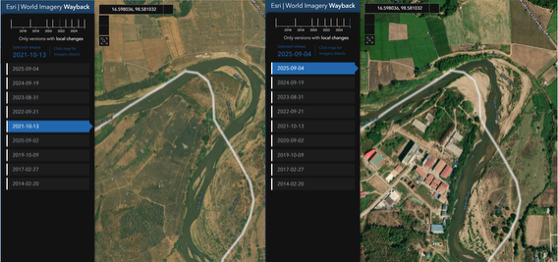In today's increasingly digital world, financial institutions face the daunting challenge of protecting themselves and their customers from a range of ever-evolving fraudulent schemes and activities. Enterprise Fraud Management (EFM) platforms have been essential tools in this battle, offering comprehensive solutions to detect, prevent, and respond to fraud in real-time.
Over the past decade, EFM solutions have undergone significant evolution to keep up with this demand. A decade ago, fraud management systems were often siloed by capability and frequently addressed only the core capabilities of alert and case workflows and regulatory obligations. In this article we will look at how these platforms have expanded their capabilities to provide end-to-end fraud management as well as the benefits and challenges of both consolidation and diversification of capabilities required to optimize the anti-fraud ecosystem.
The Evolution of Core Capabilities
Case Management
Case management functionality is arguably the earliest and most core capability of the fraud management ecosystem. It is the structured process of handling fraud cases from initial detection through investigation to resolution. It plays a crucial role in ensuring that each case of suspected or confirmed fraud is thoroughly investigated, documented, and resolved efficiently, providing a clear audit trail and facilitating collaboration among various stakeholders from fraud analysts, through investigations and eventually to compliance officers.
The evolution of case management in EFM platforms over the past decade started with improved workflow and task automation to enhance communication and collaboration among stakeholder teams. These improvements optimized workflows, increased consistency of the investigative process, reduced the manual effort required to manage cases and reduced human error by introduction of process controls. Modern EFM platforms incorporate automated workflows that guide analysts through each step of the investigative process, ensuring consistency and thoroughness, improving the efficiency of fraud investigations and maintaining high standards of consistency, accuracy and compliance. Most recently, we have seen the introduction of investigative tools (such as link analysis capabilities) added into platforms to provide investigators with even more holistic capability without having to leave the core platform.
In addition to workflow improvements and automation, communication and collaboration tools within EFM platforms have also seen significant enhancements. These tools facilitate better coordination among team members, allowing for the sharing of insights and coordinated responses to complex fraud cases. The ability to document every interaction during an investigation comprehensively ensures that there is a detailed audit trail, which is crucial for internal reviews and regulatory compliance.
Regulatory Reporting/Obligations
Regulatory reporting is a critical component of an EFM platform, involving the generation and submission of reports to regulatory bodies to demonstrate compliance with anti-fraud and financial crime regulations. This capability ensures transparency and accountability, helping financial institutions avoid legal penalties, financial sanctions, and reputational damage.
Over the past decade, the landscape of regulatory reporting has become increasingly complex, with stricter requirements and more frequent reporting obligations. In response, EFM platforms have evolved to offer more sophisticated and flexible reporting capabilities. The increased demands from regulators have necessitated systems that can generate consistent, detailed, accurate reports quickly and efficiently.
Automation has played a pivotal role in this evolution. Modern EFM platforms feature automation of regulatory reporting tasks, which significantly reduces the manual workload and minimizes the risk of errors. These automated systems can compile, generate, and submit reports in a timely manner, ensuring that financial institutions remain compliant with evolving regulations.
Customization of reports has also improved, allowing institutions to tailor their regulatory submissions to meet specific requirements. This flexibility is crucial in a regulatory environment where standards can vary significantly across jurisdictions and over time. Enhanced data integration capabilities ensure that regulatory reports are comprehensive and up to date, reflecting the latest transaction data and suspicious activity detail.
Alert Management
Beyond improvements to workflow, collaboration, and reporting, the evolution of case management in EFM platforms has focused on integration of additional core capabilities. One of the earliest and most significant of these advancements is the integration of alert management into case management systems. This seamless integration allows for the automatic creation of cases from alerts, ensuring that no potential fraud incident slips through the cracks. It also streamlines the transition from detection to investigation, improving overall response times. While the initial core capabilities of case management and regulatory reporting obligations were squarely focused on response to a fraudulent event that already occurred, the addition of alert management allowed for more timely detection and decisioning, as well as seamless case creation.
Alert management is the linchpin of early fraud detection, encompassing the continuous monitoring of transactions and behaviors to flag activities that deviate from established norms or exhibit characteristics indicative of fraud. This capability is vital for timely detection and intervention, as it enables financial institutions to identify and address potential threats promptly, minimizing financial losses and protecting their reputation.
The term “Alert Management” can be misconstrued, as this capability not only covers management of generated and ingested alerts but often the generation of the alerts themselves. The Alert Management platform typically includes the analytic workbench capabilities required for organizations to analyze, develop, and improve detection strategies.
Over the past decade, the evolution of alert management has been marked by several transformative changes. Initially, fraud detection systems relied heavily on batch data and static, rule-based algorithms that generated numerous alerts, many of which were untimely or false positives. This often overwhelmed fraud analysts and diverted attention from genuine threats. In contrast, modern EFM platforms benefit from improved, real time data programs and can leverage machine learning and advanced risk signals, such as behavioral analytics, to create dynamic models that more accurately assess the risk of fraud and produce more timely alerts. These advanced systems can learn from past data, continually improving their accuracy and reducing the incidence of false positives.
The prioritization of alerts has also seen significant improvements. Modern EFM platforms employ sophisticated risk-scoring algorithms and AI-driven analytics to prioritize alerts based on their severity and potential impact. This ensures that the most critical threats are addressed first, enhancing the efficiency and effectiveness of fraud management efforts. Additionally, the user interfaces of these platforms have become more intuitive and user-friendly, incorporating dashboards and visualization tools that simplify the management and investigation of alerts, thus boosting productivity and decision-making capabilities.
Today’s EFM Platforms: Moving Beyond the Core
Today’s Enterprise Fraud Management market is largely defined by products offering a fully incorporated end-to-end solution, not only addressing the core capabilities above, but integrating risk signal generation and orchestration, a full analytic suite to generate advanced detection rules and models, and real-time decision management supported by holistic risk scoring.
Where case management, regulatory reporting, and alert management core capabilities focus on the fraud team’s ability to detect and respond to an event that already occurred, the addition of risk signal generation, orchestration, and analytics allowed fraud teams to shift even further “left”, allowing for real-time detection and the ability to predict a fraud event that has yet to occur – generating opportunities for prevention.
Risk Signal Generation and Collection
The generation and collection of risk signals—including session, device, behavioral biometrics, and threat intelligence —are fundamental components of a modern, effective fraud ecosystem.
• Session risk signals analyze user sessions, identifying anomalies like unusual login locations or browser settings
• Device risk signals focus on the characteristics and usage patterns of devices accessing financial services, flagging unfamiliar or suspicious devices.
• Behavioral biometric risk signals capture unique user behaviors such as typing patterns and touch gestures, providing a highly individualized layer of security that is difficult for fraudsters to replicate.
• Threat Intelligence is often harvested internally from various business and channel operations to indicate a user’s potential to engage in fraudulent behavior. Financial institutions often also subscribe to external intelligence regarding negative factors that may indicate fraud based on known compromised or negative file information
These signals provide deep, real-time insights into potential fraud, enabling financial institutions to detect, prevent, and respond to threats with precision and agility. By collecting, combining, and analyzing these signals, institutions can create a comprehensive and nuanced understanding of risk, allowing for more precise and proactive fraud prevention rules and strategies.
Initially these solutions were only available through vendors that specialized in the generation of unique signals and algorithms fit for specific risks and use cases, competing vigorously to demonstrate that their approach was more effective than other market competitors. Many vendors in this space naturally expanded into the generation of proprietary, complex models to address highly specific fraud use cases such as identifying scams or detecting money mules. There continues to be a huge and competitive market of vendors competing to generate the highest value signals, algorithms, strategies, and models to predict and detect fraudulent behavior, allowing organizations to prevent fraud or mitigate threats efficiently.
As this market continued to expand and improve, EFM platforms evolved to improve ease of integration of these signals into their alerting platforms. Over time, many EFM platform providers began offering their own competing solutions to deliver the value of expanded risk signals and algorithms into their platform natively or as add-on modules. This introduced a compelling value proposition to buyers that seek to minimize vendor and system implementation cost and complexity, but also the question of whether these capabilities can compete with best-in-class market solutions.
The Right Tool for the Job: Maximizing the Value of Risk Signals
Customizing the collection and analysis of specific risk signals is crucial for optimizing the detection of different types of fraud. Each type of fraud presents unique characteristics and challenges, necessitating tailored approaches to effectively identify and mitigate risks. By focusing on the most relevant risk signals for each fraud type, financial institutions can enhance their fraud detection capabilities and improve overall security.
Identifying risk signals alone is not sufficient to effectively detect fraud; it is the advanced analytic modeling that maximizes detection for specific use cases. While risk signals such as session anomalies, device inconsistencies, and behavioral irregularities provide crucial data points, they need to be processed and analyzed within sophisticated models to uncover complex fraud patterns. Advanced analytic capabilities, including machine learning and artificial intelligence, are essential to interpret these signals, adapt to evolving fraud tactics, and reduce false positives. This is where fraud detection product vendors establish competitive advantage, creating highly specific models to hone in on otherwise undetectable factors that accurately and consistently predict specific types of fraud.
With many modern EFM Platform providers now building versions of these advanced analytic capabilities into their platform, buyers must measure the platform’s capabilities against a robust list of requirements and success criteria needed to achieve their goals. The success criteria must set the stage for understanding the primary objective and benefits to be derived from the investment. While most buyers seek improvements across the full range of capabilities, organizations should prioritize their success measures around desired outcomes for operational efficiency (workflows, automation, collaboration) against the need for improved effectiveness (detection capability, performance, and fraud loss reduction).
Once the primary success measures and objectives are understood, solid requirements for meeting those objectives must be determined. This can be a complex task as requirements are not simply a factor of desired outcomes, but whether the organization or vendor under consideration holistically addresses the full set of dependencies required to achieve that outcome. For improved fraud detection, this necessitates a very honest evaluation of the health and condition of the organization’s data program, the extent and complexity of data and threat source integrations to be performed, the scalability and capability of the analytic platform, and the skill level and availability of analytic resources to perform analysis and develop advanced models within the solution.
Few but the largest and most heavily funded financial institutions (if any) have all the capabilities in place to optimize the collection, orchestration, and analysis of fraud threat and risk signal data strictly using internal tools and resources, which has created the market for holistic EFM platforms and specific fraud detection solutions.
Beyond the Horizon: Adapting for Tomorrow
The speed of digital innovation in financial services continues to accelerate the evolution of fraud schemes and tactics with no end in sight as the cat and mouse game continues. The emergence of innovative fraud detection solutions has enabled organizations to achieve best-in-class detection results in the face of inadequate internal technology resources and skills.
As EFM platform providers continue to develop and offer competing detection capabilities, the industry also continues to see development toward a more cohesive and collaborative approach to signal and intelligence orchestration. The concept of “fusion” or “convergence” is opening the doors to more centralized collection, orchestration, and analysis of risk signals across Fraud, Cybersecurity and AML. While several organizations are already seeing success in this collaboration, that success is hard-won through manual integration of people, process, and technology. This trend is expected to continue, which may necessitate evolution or integration of EFM Platform capabilities with the needs to generate, ingest, and analyze risk signals and threat intelligence across Cybersecurity and AML, along with the ability to deliver workflow and automation improvements to maximize the value of convergence.
As the adage dictates, the only constant is change. Organizations must continue to adapt to changes in customer demands, the economy, the risk environment, and the availability of solutions to address it all. Critical to this is the ability for a financial institution to accurately evaluate its needs and capabilities and know when to diversify, when to consolidate, and when to hold tight during ever-changing times.
Learn More
To learn more about the important role that risk signals, such as behavioral biometrics and device intelligence, play in shaping the future of enterprise fraud management, check out the following market trend and vendor landscape reports:
Datos Insights Matrix: Behavioral Biometrics and Device Fingerprinting Solutions
Quadrant Knowledge Solutions SPARK Matrix: Behavioral Biometrics & Device Intelligence, 2024



